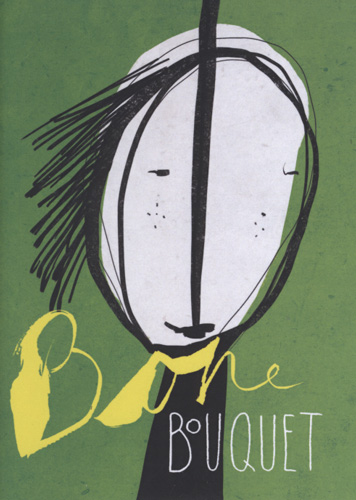Bone Bouquet – Spring 2015
Bone Bouquet is a biannual print journal that features poetry by women writers. The Spring 2015 issue includes a varied range of voices and styles, and a satisfying selection of creative forms. The speakers throughout are strong, self-aware, and are unafraid to expose their flaws. This slim volume covers topics of grief, loss, and self-consciousness, while also displaying the beauty of language through several complex descriptions of the surrounding world. Bone Bouquet is a biannual print journal that features poetry by women writers. The Spring 2015 issue includes a varied range of voices and styles, and a satisfying selection of creative forms. The speakers throughout are strong, self-aware, and are unafraid to expose their flaws. This slim volume covers topics of grief, loss, and self-consciousness, while also displaying the beauty of language through several complex descriptions of the surrounding world.
Issue 6.1 features several poems that face difficult topics head on. We see this depicted in the first poem, “Polaroid of Blue Human Condition,” by Katie Jean Shinkle. The poem is constructed in five stanzas or “figures,” and begins:
Figure No. 1 a kind of vacancy,
only a caw can have, cry on a holiday morning,
with a dog & husband, on top of a hill
The first line tells readers that something is missing, but the rest of the poem confirms it. The first stanza evokes a somber image. The extra spacing throughout the poem visually creates a vacancy of its own, encouraging the reader to pause between lines, and gives tangible form to the hollowness depicted throughout the poem. We soon learn the root of the “vacancy”:
spring where daughter, would be one year,
& you cannot imagine anymore springtime
The grief of a tragedy and the stages of healing that follow set the tone for an issue that is powerful, poignant, and varied in topic.
There is an atmosphere of restlessness in “They Said They Wanted to Be Fed” by C.F. Sibley. The poem is presented from the perspective of a girl in pigtails, as she recalls being visited in her home by strangers. The title itself suggests that this is not an innocent visit, and the imagery evokes a rural, secluded atmosphere. Powerful descriptions of one visitor’s “new mustache like two fat daggers,” the window “jagged with frost,” and the father’s “wire arms” work together to portray the reality of the situation. It is never exactly clear what the visitors’ true objective is, but readers know that it is more dire than a simple desire to be fed, as the title suggests. The poem ends as the father bends to put fire in the stove:
. . . He feels my eyes, shakes his head slowly
like a sow in the habit of waking to find
another of her litter missing.
They took my sister first.
The poem ends with a final line that produces more questions than it answers. As readers, we are left to piece together what clues we are given. The open-endedness is both startling and captivating.
Anastacia Tolbert’s appropriately-named poem “Multiple Choice” illustrates to readers the complexity of language. Words—the ones chosen here are “shelter,” “lump,” and “death”—have several meanings and connotations, and these vary from person to person, and experience to experience. Each of the three words is accompanied by three descriptions, labeled a., b., and c. The first selection for each word describes a specific memory or recollection. For “shelter,” readers are introduced into a memory of a young girl’s birthday at a homeless shelter, where a small act of kindness by the shelter librarian—a gifted fish fillet and mixed CD—impacts the girl beyond measure:
& you felt like that shelter
librarian was your fairy god mother. & you wanted to call her
god. & you wanted to prostrate yourself—fall on your brand x
lotion knees, give her something, anything from inside yourself
to tell her thank you.
The memory is personal, powerful, and unique. For many, the word “shelter” may mean little, but for the speaker, a profound memory is summoned. The next description for each term is the literal or “dictionary definition” of each word. “Lump” is described as “a compact mass of a substance, especially one without a definite / or regular shape.” The third choice is another description of the term. For “death,” it is “The ends beginning.” For “shelter,” it is “the safe place you miss called grandmothers house.” “Multiple Choice” uses a familiar yet unexpected form to remind readers that within each word exists a realm of possible definitions, meanings, and connotations.
The poetry in Issue 6.1 of Bone Bouquet is rich with impactful works of poetry by women. The speakers throughout are powerful, yet willing to share their flaws. Many poems are both delightful and strange, and the images throughout are often dizzying and beautiful all at once. The volume hits on a satisfying range of voices, styles, and subject matter, and even includes some book reviews at the end for those searching for further reading.
[www.bonebouquet.org]





